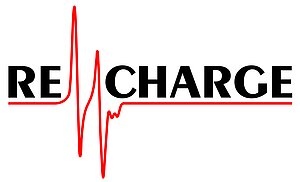Sascha Gehrke, Student unserer <link https: imprs.cec.mpg.de external-link-new-window internal link in current>IMPRS-RECHARGE in der Gruppe von <link https: www.chemie.uni-bonn.de pctc mulliken-center bilder barbara-kirchner external-link-new-window internal link in current>Prof. Barbara Kirchner, ist es gelungen in Zusammenarbeit mit Kollegen der Gruppe eine Publikation im Journal <link http: www.rsc.org journals-books-databases about-journals faraday-discussions external-link-new-window internal link in current>Faraday Discussions zu platzieren.
Faraday Discussions ist ein, von der Royal Society of Chemistry publiziertes, wissenschaftliches Journal, das originale Forschungsarbeiten veröffentlicht, die während eines Faraday Discussions Meetings vorgestellt werden.
In der <link http: pubs.rsc.org en content articlelanding fd external-link-new-window internal link in current>Publikation, bei der Herr Gehrke als Erstautor auftritt, geht es um ein Verfahren mit welchem sich aus Computersimulationen die (diffusions-korrigierte) Austauschrate von schwachen Wechselwirkungspartnern in Flüssigkeiten bestimmen lassen. Das Verfahren beinhaltet Korrekturen um die Einflüsse der zufälligen Durchmischung der Flüssigkeit zu berücksichtigen.
Das besondere bei einer Publikation in Faraday Discussions ist, dass man Artikel dort nicht einfach wie üblich einreicht, sondern Autoren eingeladen werden etwas zu veröffentlichen. Die Themen werden anschließend auf einem Faraday Discussions Meeting ausgiebig diskutiert.
Das Thema des entsprechenden Discussions Meeting war "<link http: pubs.rsc.org en journals external-link-new-window internal link in current>Ionic liquids: from fundamental properties to practical applications". Sascha Gehrke und seine Kollegen wurden eingeladen sich mit einer Publikation an der Diskussion und somit an der Ausgabe zu beteiligen.
Kurze Zusammenfassung der Publikation:
Liquid properties are the result of a subtle interplay between various attractive and repulsive interactions that make their prediction notoriously difficult. These interactions may be strong, as those between two charged species, or weak, as those leading to the formation of hydrogen bonds. Questions, such as how long does a hydrogen bond live, or how long do two ions aggregate are thus at the heart of theoretical chemistry research on liquid systems. The answer, however, is hardly ever trivial, especially in complex liquids, where a myriad of other processes couples to the elementary dynamic processes of interest. While statements such as “a hydrogen bond may only form, after two particles have approached each other” sound trivial on paper, advanced and state-of-the-art methods are required to uncouple the random motions of particles from the bond formation process. In the article, we apply such a method to study the hydrogen bond and ion pair dynamics of ionic liquids. The chosen approach is not only a robust way to isolate the target processes, but additionally reveals valuable information about other dynamical processes, which are only slightly understood to date.
Gehrke, S., von Domaros, M., Clark. R.; Hollóczki, O., Brehm, M., Welton, T., Luzar, A. and Kirchner, B.. (2017) Structure and lifetimes in ionic liquids and their mixtures, Faraday Discussions, <link http: pubs.rsc.org en content articlelanding fd external-link-new-window internal link in current>doi: 10.1039/C7FD00166E

